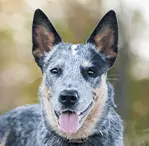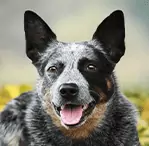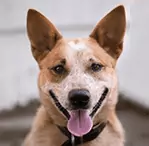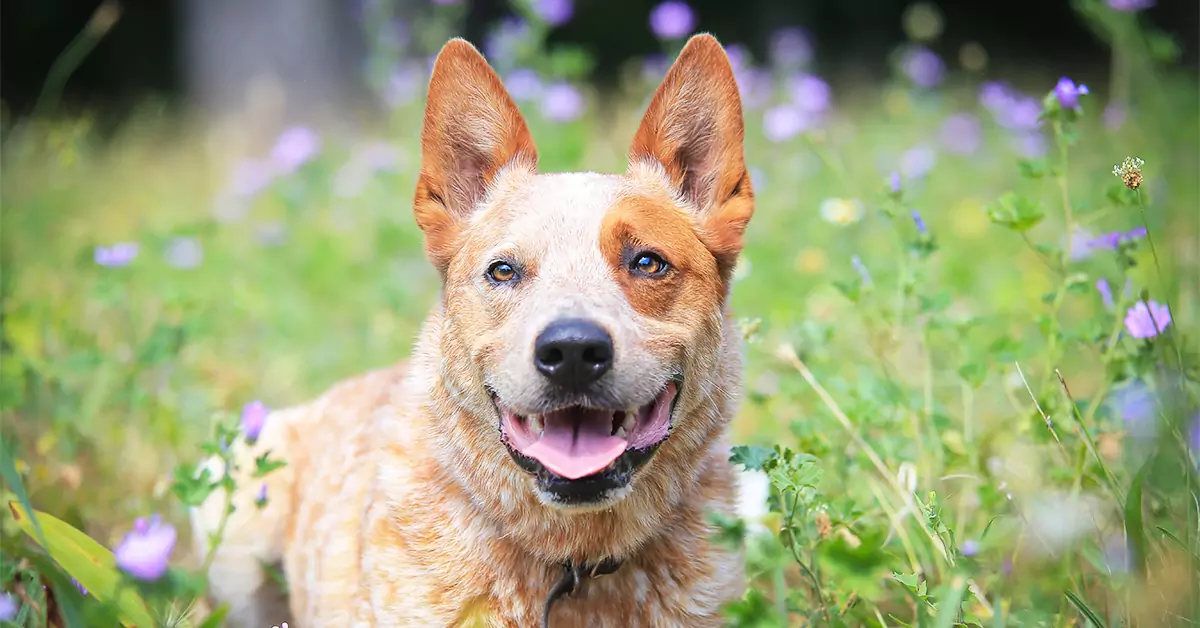
Meet the Australian Cattle Dog
Top Working Dog
High Doggy I.Q.
World-Class Watchdog
My Many Looks
My Breed Characteristics
Furbulous Fact
As I Grow Up
History of My Breed
Care Tips
Training Tips
Personality
Energetic
Loyal
Smart
Group
Herding
Origin
Australia
Life Span
12-16 Years
Breed Popularity
#54 of 195
Height Range
17-20 Inches
Weight Range
35-50 Pounds
Coat Details
Type
Short and Straight
Texture
Flat Outer Coat & Dense Undercoat
Features
Double Coat; Rain and Dirt Resistant
Colors
Blue, Blue Mottled, Blue Speckled, Red Mottled, Red Speckled +/- Black & Tan Markings, Red M
Hypoallergenic
Cost to Buy
$250-$1,200
Lifetime Care Cost
$20,060
My Many Looks
My Breed Characteristics
Furbulous Fact
As I Grow Up
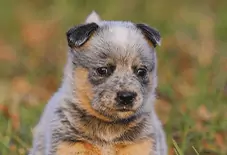
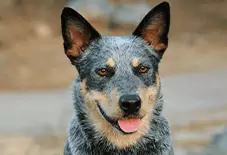
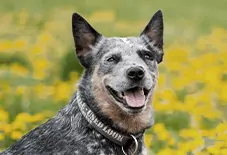
History of My Breed
Care Tips
from Dr. Jessica Greenberg, Associate VeterinarianKeep an eye on your ACD’s eyes.
Cataracts are the most common cause of blindness in the dog, and the Australian Cattle Dog may be predisposed to their development. A cataract occurs when the lens of the eye becomes cloudy, resulting in an opaque appearance to the normally transparent lens, and causing vision impairment and ocular inflammation. This is not to be confused with nuclear or lenticular sclerosis, an aging change seen commonly in dogs that does not generally have a significant effect on vision. Clinical signs of cataracts may include clumsiness, bumping into objects, and uncertainty about new environments. Surgery is the most effective treatment for cataracts.
Watch out for lumps when petting your pup.
Any lump or bump that appears on your dog and doesn’t go away should be checked by a veterinarian. They can run tests on the cells inside the mass to see what type of it is and recommend the best treatment. Australian Cattle Dogs are more commonly associated with a serious type of mass known as a mast cell tumor. These tumors are sometimes (but not always!) pink or red at the surface and may easily become inflamed. If your dog is diagnosed with a mast cell tumor, your veterinarian will most likely want to do surgery to remove the mass as soon as possible.
Be on the lookout for signs of deafness.
The Australian Cattle Dog can carry a congenital (inherited) form of deafness. Deafness in a dog can be difficult to detect because dogs are good at compensating and at times it can be hard to know if the dog can’t hear you or if it’s just not listening! If you suspect your dog may be deaf, let your veterinarian know. There is a test called a Brainstem Auditory Evoked Response (BAER) that can help to diagnose deafness. Deaf dogs can still be trained with the use of hand signals and positive reinforcement.
Training Tips
from Dr. Jessica Greenberg, Associate VeterinarianSocialize your Australian Cattle Dog early and often.
It's important to socialize your Australian Cattle Dog with dogs and people of all ages. When introducing them to someone new, keep them on a leash and always talk to the person or dog cheerfully to encourage your pet. Reward your pup if they come closer and sniff, and when they begin to approach people confidently, let the stranger hand them some treats. ACDs can be aggressive when they play so it's important to teach them what is appropriate. If they get too rough, pull them away on their leash and give them a quick timeout. Remember to do this each time your dog is too rough so they understand which behaviors are not allowed. Also, make sure the dogs you are introducing them to are over three years old since an older dog will correct them when they are being too rough.
Your Australian Cattle Dog needs LOTS of daily exercise.
Since ACDs were bred to herd cattle, they need lots of activity. Plan on at least 40 minutes of running time each day along with games and walks. You can make exercise part of the training program by teaching them to fetch. Find two identical toys for your dog to play fetch with, but only throw one and hide the other. If they don't bring it back, end the game. If they retrieve it, show the second toy and throw it. Each time you throw a toy, get your pup super excited about it. Remember that these two toys are only to be used when you want to play, so don't leave them out for him or her all the time or they will become less exciting.
Use replacement techniques to avoid problem chewing.
When an Australian Cattle Dog has not had enough exercise and is given too much freedom, they will start to dig and chew. Until they understand what they can and cannot chew, restrict their access to the yard and house. Do not punish them when they chew, but tell them to “leave it” and redirect their attention to a different toy. Remember not to chase your pup if they have an object they shouldn't have because that just creates an awesome game. Grab a different toy they can have and run with it like that is the most awesome game ever. It's almost guaranteed that your dog will drop what they have to come and get your toy instead.
My Many Looks
My Breed Characteristics
Furbulous Fact
As I Grow Up
History of My Breed
Care Tips
Training Tips
-
Personality
Energetic
Loyal
Smart
-
Group
Herding
-
Origin
Australia
-
Life Span
12-16 Years
-
Breed Popularity
#54 of 195
-
Height Range
17-20 Inches
-
Weight Range
35-50 Pounds
-
动物皮毛
Type
Short and Straight
Texture
Flat Outer Coat & Dense Undercoat
Features
Double Coat; Rain and Dirt Resistant
Colors
Blue, Blue Mottled, Blue Speckled, Red Mottled, Red Speckled +/- Black & Tan Markings, Red M
-
Hypoallergenic
-
Cost to Buy
$250-$1,200
-
Lifetime Care Cost
$20,060
